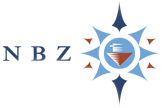What really lies behind the rise and rise of handysizes?
27-01-2021
Time charter average rates have almost quadrupled since last May - at times even surpassing those for supramaxes. Handysize bulkers are having their moment, with spot rates maintaining a largely consistent upwards trend since hitting rock bottom last May. But the handysize market is fragmented and opaque, making it less obvious why spot rates have sustained such an epic bull run.
The weighted time charter average rate for the Baltic Exchange’s seven key handysize benchmarks has risen by 193% since mid-May 2020 and was assessed at $12,056 per day on Friday. Calculations by Braemar ACM show that the Baltic’s 38,000-dwt handysize index in 2021 to date is 63% higher than during the same period in 2020.
Rates are 70% higher than average January levels over the past five years, based on the Baltic’s old 28,000-dwt handysize index, according to the shipbroking giant.
Regional strength
The strength of the physical market has even sparked its efforts to kick-start trading of freight derivatives, as TradeWinds has reported. But why has the spot market been doing so well? Hans-Christian Olesen from Danish operator Ultra-bulk told TradeWinds that the rise has been influenced partly by rising container rates.
“We’ve seen that some of those cargoes that maybe used to go in containers — so that could be steel products, forest products, bagged cargoes — have gone from containers back into breakbulk,” said Olesen, who is head of Ultrabulk’s panamax, supramax and parcel service. But research by Arrow Shipbroking Group said any cross-trading of breakbulk cargoes would be too small to have a significant impact on the market.
“While it may have contributed to the strength regionally, we believe there are rather fundamental reasons behind the rally in the handysize segment,” the firm’s research team told TradeWinds.
World catching up with China
Their research shows that handysize cargo volumes have been improving steadily since May, with average monthly shipments up by 7.8% between June and December compared with the previous five months. “While seasonality is a factor, the growth was stronger than the usual pickup during the same periods in pre-pandemic years,” Arrow told TradeWinds. “The growth in cargo demand was initially led by China, now the rest of the world is catching up.”
This can be seen in the Global Manufacturing Purchasing Managers’ Index output sub-index, which reached its strongest level since January 2018 in December, according to Arrow. “New orders for manufactured goods are also rising sharply, suggesting that activity will pick up further in the coming months,” the team said. “Following a period of demand shocks and supply chain issues, [the] global industrial sector is restocking ahead of an anticipated pickup in demand later in the year. This is boosting demand for minor bulks and handysize vessels.”
Meanwhile, the handysize orderbook stands at less than 4% of the live fleet, so Arrow expects low net fleet growth to continue this year.
Basin instinct
Growth in the handy fleet slowed steadily throughout 2020, from about 2.4% year on year in December 2019 to 1.1% in December last year, Arrow estimated. “With a strong rebound in cargo volumes and slowing fleet growth, the handysize rally looks set to extend well into 2021,” it said.
Derek Langston, head of research at shipbroker Simpson Spence Young, said structural factors in the Atlantic and Pacific basins have added to this supply-and-demand dynamic. “Starting with the Pacific, with Australia a key market for handysizes in the basin, tighter requirements on crew change from the Australian Maritime Safety Authority in response to the pandemic placed significant restrictions on tonnage availability,” he told TradeWinds.
Handysizes have also benefited from active grain exports from the east coast of Australia during the past few months, unlike in the previous two years, Langston said. This benefit has been compounded by delays to discharging operations, caused by severe weather in China, which has thinned tonnage availability elsewhere.
Meanwhile, handysizes in the west have been kept busy since July by surging Turkish imports of scrap steel, much of which is sourced in Europe, according to Langston. The fourth quarter saw changes in European grain trades too.
“During the Q4 specifically, changes to grain trading patterns in Europe emerged, with more grain shipped on handies into North Africa from the Baltic Sea as opposed to France, so lifting handysize tonne-mile demand in that quarter,” he said. “That pattern has since reverted, with more French grain cargoes appearing.”
How does this effect the business of NBZ?
NBZ has participations in 2 handysize bulk carries and 2 container vessels. The year 2020 was quite difficult for the dry bulk market as a whole, but better times seems to be close now. Various reasons behind the improved charter rates for handysize bulk carriers are described in the Tradewinds article above.
Cargo growth was led by China as from 3rd quarter last year, now the rest of the world is following. The container market as well as the bulk market are benefitting from increased orders for manufactured goods, mainly produced in China. Within the bulk market, the handysize market benefits in particular as demand for minor bulks have increased as well. Taking into account the low orderbook (which decreases further) and the ongoing strong demand, 2021 might become a good handysize year. Currently the number of S&P transactions are increasing and prices might follow soon.
Source: TradeWinds
« Ga Terug
Wat is NBZ?
- Een beleggingsfonds in zeeschepen.
- Het fonds financiert meerdere schepen, die op verschillende markten actief zijn.
- Dankzij deze spreiding beheersbaar risico.
- Streef dividend tussen 7% en 10% per jaar.
Koers NBZ
Intrinsieke waarde
31 december 2023
USD 2,84
€ 2,58
Beurskoers
Actuele koersinformatie
ISIN NL0010228730

